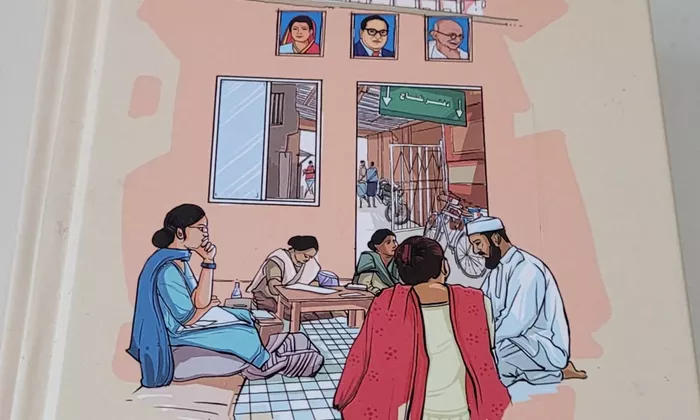In the increasingly polarized landscape of Indian politics, the condition of Muslims—who make up one of the largest religious minorities in the country—remains deeply precarious. From systemic housing discrimination and religious profiling to sensationalist media narratives, Muslims in India continue to face exclusion on multiple fronts. Sagnik Dutta’s new book, In the Shadow of Minority Rights: Decolonising Gender, Liberalism and the Politics of Difference, offers a bold re-examination of how Indian Muslims are framed in public discourse and governed by legal institutions.
In a recent essay, legal scholar Jeffrey A. Redding engages with Dutta’s work, praising it for steering away from conventional liberal remedies such as multiculturalism or enhanced religious freedoms. Instead, Dutta advocates for a more grounded, ethnographic approach—one that prioritizes lived experiences over abstract political ideals.
“Dutta urges scholars to move beyond reified categories of minority rights, gender, liberalism, and religion,” writes Redding, citing the author’s call to reorient analysis around how laws—especially Islamic family laws—function in the daily lives of Indian Muslims. For Dutta, decolonization is not merely about critiquing Western norms or returning to native traditions, but about rethinking methodology itself.
Rethinking the Framework of ‘Minority Rights’
One of the central arguments in Dutta’s book is that traditional liberal conceptions of minority rights often reinforce dominant discourses that pit the individual against the community, and oversimplify complex relationships between religion, state, and gender. Dutta critiques how gender equality is frequently weaponized in Indian public discourse to portray Muslim communities as inherently regressive—an example of what Dutta terms “everyday Islamophobia.”
The book places particular emphasis on the workings of non-state Islamic courts in Mumbai, especially those run by the Bharatiya Muslim Mahila Andolan (BMMA), a feminist Muslim organization. These shariat courts have been at the center of national debates over the criminalization of triple talaq, a controversial form of Muslim divorce.
In Chapter 5, titled “Between the Home and the World: The Many Publics of Muslim Law,” Dutta explores how these BMMA-run courts blend private and public spheres. “There was an expectation,” Dutta writes, “that everyone present would participate in an unfolding narrative of sorrow and grief.” This blurring of lines between intimate family matters and communal witnessing reflects the deeply affective nature of legal life in Muslim communities.
Complexities of Muslim Feminism
Dutta’s analysis also raises questions about the evolving landscape of Muslim feminism in India. On one hand, the BMMA’s work empowers women and challenges patriarchal norms. On the other, Redding points out that some of its strategies—such as close collaboration with law enforcement or calls for criminal prosecution of Muslim men—echo the very state apparatus that has historically marginalized Muslim communities.
He notes the paradox of Muslim feminists aligning with state narratives that depict Muslim women as helpless victims of Muslim male oppression. “Some feminist Muslims have similarly endorsed Indian state characterizations of Muslim women as abject,” Redding writes, cautioning against what legal theorist Janet Halley has called “governance feminism”—a form of feminism that wields state power to pursue its aims, sometimes at the expense of solidarity within minority communities.
A Call for Methodological Reckoning
Dutta’s book is part of a growing body of scholarship that critiques both the state and non-state institutions shaping Muslim life in India. What sets this work apart, Redding argues, is its methodological innovation and refusal to reduce the problem to simplistic binaries—state vs. religion, public vs. private, liberal vs. traditional.
The book also sheds light on how the Indian state manipulates sectarian divisions within Islam, including the emergence of what Redding calls “Muslim feminist sectarianism.” As seen in the landmark Shayara Bano v. Union of India case, the state can strategically recognize certain Muslim voices—such as those of feminist activists—while sidelining others, reinforcing its control over the narrative.
In the end, Redding sees In the Shadow of Minority Rights as an essential contribution to our understanding of the fraught and often contradictory relationship between Indian Muslims and the state. By moving beyond technocratic and text-centered approaches, Dutta opens the door to a more nuanced, empathetic, and ultimately decolonial method of engaging with minority rights.

